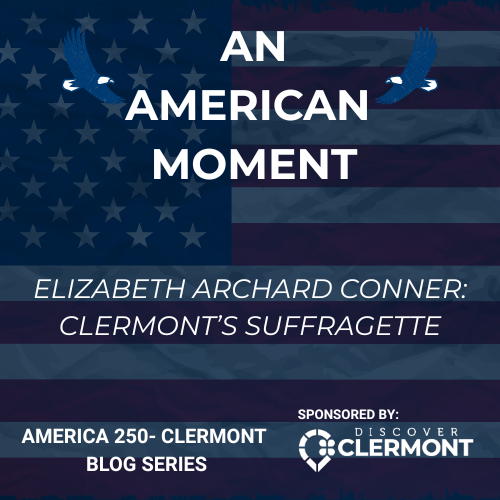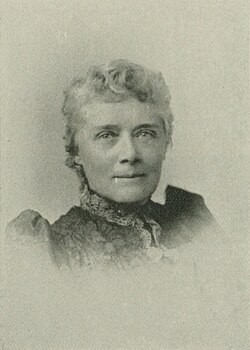Ohio was in the forefront of the suffragette movement, hosting a convention on women's rights in the state as early as 1850. But before the movement could organize, the battle over slavery grabbed the nation's attention. Women joined the anti-slavery movement. They were welcomed as members of the anti-slavery societies that were forming all over the North. Women wrote anti-slavery pamphlets and organized petition drives and protests. Those experiences gave them the training they needed to become political operatives.
The Ohio Suffrage Association was formed in 1869; the first such organization in the nation. Attempts were made in 1912 and 1914 to amend Ohio's Constitution enfranchising women, but failed to gain enough popular support. Ohio passed a law permitting women to vote in the presidential election of 1920.
The Ohio General Assembly voted to ratify the 19th Amendment to the U.S. Constitution on June 16, 1919, becoming the fifth state to do so. With the approval of Tennessee's legislature two months later, the 19th Amendment became law. After a decades long struggle, women got the vote.
Many of us have heard the names of the heroines of the movement: Susan B. Anthony, Julia Ward Howe, and Elizabeth Cady Stanton. Most, however, don't recognize the name Elizabeth Archard Conner, Clermont's own suffragette. Conner's life and accomplishments, especially as a woman of her time, are truly noteworthy.
Elizabeth, born in New Richmond on January 4, 1838, was a precocious child. Her parents enrolled her at the well-regarded Clermont Academy, a co-educational and racially integrated private school in nearby Boat Landing. She was a rambunctious child and was told to be quiet in study-hall. She was either unable or unwilling to be quiet and was asked to leave the school.
She attended Antioch College in Yellow Springs, Ohio. Applying herself, Elizabeth graduated one year ahead of schedule. She returned to Antioch twenty years later to earn a Master's Degree, the first woman to receive an advanced degree from that institution.
Elizabeth's first job was teaching Latin and German at an Indianapolis, Indiana high school. She learned that male teachers were earning more money than women. The budding feminist argued her point that women teachers should earn as much as men to the Board of Education. It agreed and instituted an equal pay policy.
Her time as an educator was short-lived. She began writing for the Cincinnati Commercial newspaper under the by-line of "E.A." and for the Saturday Evening Post using the nome de plume of "Zig". Her favorite topic at this time was the Civil War. She wrote from a different perspective.
In one piece she addressed the "destitute conditions" poor women faced after their husbands or fathers were killed or maimed in the war. She lamented that poor women had so few employment opportunities, concluding, "The world is out of joint somewhere" or that "God had made a mistake".
Writing took Elizabeth from her New Richmond roots. In 1898 she traveled to Canada to cover the Yukon Gold Rush. Her gritty reports of the rough and tumble lawless world of the gold fields enhanced her reputation as a realistic observer of the world. Upon completion of her assignment, she decided to visit Japan. A typhoon struck her ship near the Philippines. She was taken to the islands to heal from a broken arm sustained in the storm.
Her timing could not have been better. The Philippines War, a vicious three year conflict between the U.S. and Filipino insurgents, had just started. Despite her injury, Elizabeth went to the field to cover the action. According to Leslie's Weekly newspaper, she submitted a "series of brilliant letters" about the war that were often "written within the sound of the artillery". Her coverage of the Battle of Los Pinos prompted several Army officers to declare her description of the action as "the most accurate and graphic" of the engagement.
Elizabeth moved to New York, leaving her husband and child behind, to pursue her career in journalism. She became the editor for the Brooklyn Eagle and later the literary editor for the New York World. In 1885, she was appointed editor of the American Press Association, now known as the A.P.
Elizabeth continued her involvement in women's issues, especially the suffrage movement.
She had a direct, sometimes too direct, writing style which earned her a devoted audience.
She joined fellow women's rights advocates such as Elizabeth Cady Station, and Julia Ward Howe. She became well known for her radical ideas and, at times, fiery rhetoric. Writer Cora Arney said that Elizabeth "was tough, highly opinionated, and radical in her time ".
She was absolutely convinced that women would get the vote just as Black men did six decades before, stating: " All the fogies in the United States cannot prevent it."
Despite her best efforts, she did not live to see the realization of her dreams. Elizabeth died on June 4, 1912, eight years before the 19th Amendment was ratified. Clermont's suffragette is buried in New Richmond's Warren Cemetery.



